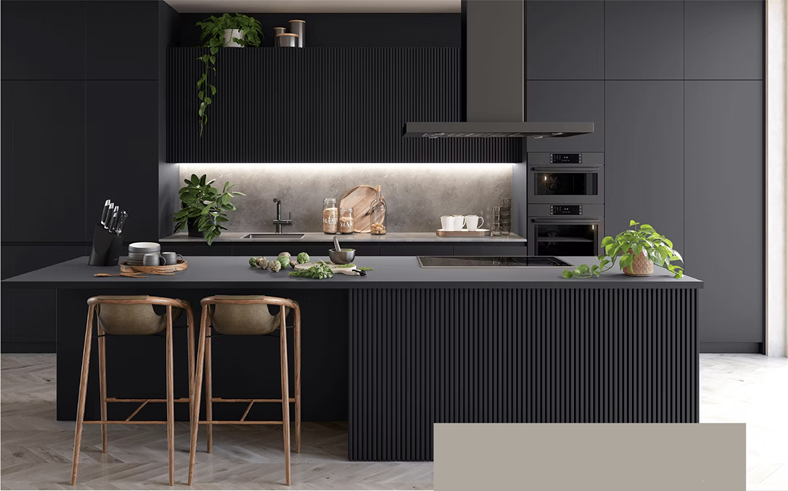
Black MDF: The Perfect Choice for Modern and Sophisticated Design
What is Black MDF and How is it Made? Black MDF is a wood panel made from medium-density wood fibers
Under California formaldehyde Regulation (which is the regulation that everyone bases on), the manufacturers may receive exemption if they demonstrate their ability to make low emitting formaldehyde products.
All wood has formaldehyde in it, it is a natural occurrence. Therefore, there is no 100% formaldehyde free products, but they differentiate it by the amount of formaldehyde in glue components.
There are TWO categories:
Both the NAF and ULEF are considered “green products” or “California Phase 2 Compliant”.
See our blog for more information: https://www.plywoodexpress.com/fsc-certification
Quartered Cut Veneer: When slicing the veneer, it gets cut perpendicular to the growth rings. This creates a straight-line appearance.
Plain Sliced or Flat Cut Veneer: A half log is mounted with the heart side flat. The cut is then made with the blade parallel to the length of the log producing the appearance of a “cathedral” effect
Check our veneer cuts page for more information: https://www.plywoodexpress.com/p/veneer-cuts/
You can apply veneer to, MDF, Plywood, wood/wood-2ply, 10mill paperback, particleboard
MDF Ultra Lite has an average density of 23Ib with 220 grit sanding achieving a light and smooth surface. It is an ideal choice when finished product weight is a concern.
MDF regular is generally denser than plywood, it is made by breaking down hardwood or softwood into fibers that are then applied to high temperatures and pressures.
Book match – Consecutive sides of veneers are open facing each other like pages in a book.
End match – Two consecutive leaves of veneer are book matched and two more leaves are flipped creating a four-piece match
Sequence match – In sequence matching, veneered panels are sourced or manufactured in sequence, meaning that each consecutive panel will be well matched for both grain and color.
Composite Wood Veneer is made from real wood but engineered in a way that makes it less expensive and longer lasting. It is created to duplicate the appearance of solid wood but offers a much lower cost. Composite wood veneer is available in a variety of grains, colors, and styles.
It depends on the material and size of the veneer. Contact your sales representative for more information.